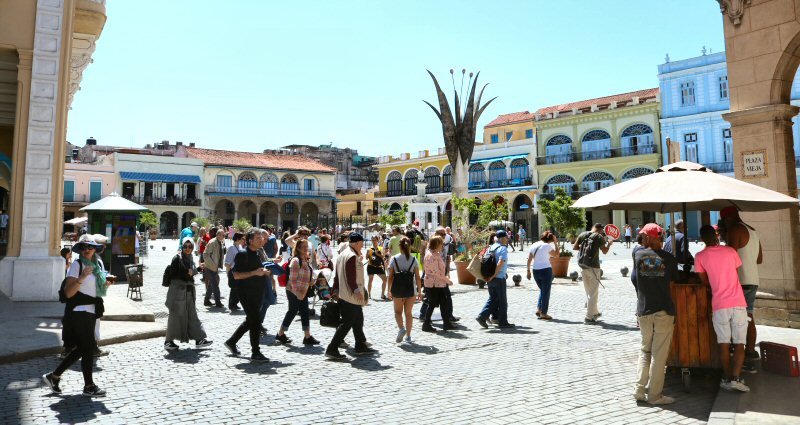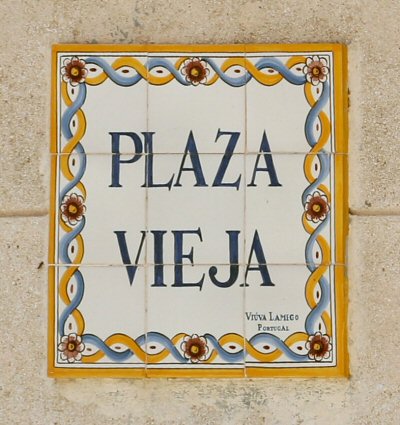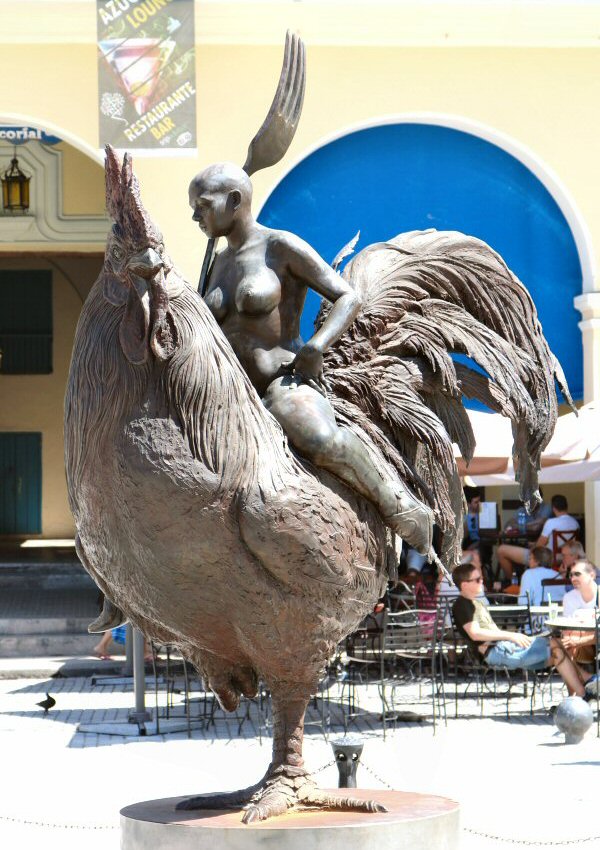

The Plaza Vieja is one block west to the Plaza de San Francisco and four blocks south to the Plaza de Armas.
Towards the end of the 16th century,
after the Castillo de la Real Fuerza was built, the Plaza de
Iglesia became a military place where the soldiers of the
Royal Force were making their military exercises. It
received the name Plaza de Armas and day by day it lost its
public character. This development impelled the city council
to look for other areas that would be used for commercial
and social activities. Thus, in 1587, nearly 30 years after
the new square was initially proposed, the city council
decided to recover the same place, destined to the new
plaza. Consequently, the Plaza Nueva (New Square) emerged as an
alternative to the Plaza de Armas at the end of 16th
century. It was the first planned attempt in terms of the
urbanism in Havana that arrived with some transformations
from the 16th century until our days.
Towards the last third of the 17th
century the Plaza Nueva flourished almost spontaneously by
becoming the residential area of Havana’s wealthy citizens.
It became the site of processions, bullfights and fiestas
where these rich Creoles looked on from their balconies;
however, it was also a site of executions. The plaza was
used for different purposes, as residential, commercial and
recreational area, without housing any religious,
administrative or military building.
The square became a field where the Creole domestic architecture was experimented in the 17th and 18th centuries. The residencies with wooden balconies, roofs covered with tiles, and portals with columns topped with arches were prevailed in the square.
In the 18th
century the Plaza Vieja turned into a popular open-air food
market and the citizens commenced to call it Plaza del
Mercado (Market Square). At that time the place was the
commercial hub of Havana. With the birth of a new market in
Plaza del Cristo in
1640, the name of the Plaza del Mercado was replaced by the
name of Plaza Vieja (Old Square) in 1814 to differentiate it
from the Mercado Nuevo (New Market) in Plaza del Cristo.
Until today the square has also been identified by other
names, such as Plaza Real, Mayor, Mercado, Fernando VII, the
Constitution, Parque Juan
Bruno Zayas and
Parque Julián
Grimau.
In 1908 the old market of the plaza was
demolished to make room for a park. In 1952 the area of the
park was transformed into an underground car parking that
spoilt the view of the plaza considerably. Soon many of the
buildings around the plaza slowly continued to deteriorate.
Fortunately, when Old Havana was listed by UNESCO as a Cultural
Heritage site in 1982, the restoration was initiated in the
plaza. In 1996 the monstrous car parking was demolished to
make way for the massive renovation project. The
restoration, started in 1982, is gradually re-establishing
the Plaza Vieja’s original atmosphere.
The plaza is surrounded by valuable
colonial buildings from the 17th to 19th centuries that
maintain stylistic unity, just as they are two-storey
buildings that open to the outside through portals and
galleries. There are also a few very striking early
20th-century art nouveau buildings.
The fountain at the center of the square is made of
white Carrera marble. It is the replica of the original
fountain surrounded by four dolphins from the 18th century
that was the work of the Italian sculpture Giorgio Massari.
It had been destroyed during the construction of the car parking.
On the southeast corner of the square, there is a
bronze sculpture of a naked woman riding a rooster. She is
holding a large fork and wearing high heels. This unusual
sculpture is the work of Roberto Fabelo, and it was
installed in 2012.
On the northeast corner of the square, there is a modern sculpture made of iron that represents the bullfighting fan. It is the work of the Spanish Kieff Antonio Grediaga.
 The
Plaza Vieja (Old Square) is the second oldest square of
Havana, after the Plaza de Armas, bordered by the Mercaderes,
San Ignacio, Teniente Rey and the Muralla streets.
The
Plaza Vieja (Old Square) is the second oldest square of
Havana, after the Plaza de Armas, bordered by the Mercaderes,
San Ignacio, Teniente Rey and the Muralla streets.
In the 16th century the Franciscan friars were complaining
of the noisy activity of the vendors and the town criers in
front of their humble church, as it was hindering the
celebration of masses in their convent. The area in front of
the convent, where later the Basílica Menor de San
Francisco de Asís would be built, was the crossing point of
the commercial activity due its proximity to the harbor. The
Franciscan friars requested from the city council the
creation of another plaza for commercial purpose.
On the other hand, due to the urban
and commercial development of Havana in the 16th century,
the city had to expand. In 1559 the city council decreed the
establishment of another square about one hundred meters
far from the convent, destined to the market and public
celebrations, substituting the Plaza de Iglesia that
had lost some of its space, when the construction of the
Castillo de la Real Fuerza (Castle of Royal Force) had
been initiated in the previous year. Even though the chosen
area was completed as a new square, it remained to be in
little demand for more than two decades, so that the city
council decided to divide the area into plots and rent them,
before the number of the residents would increase.
